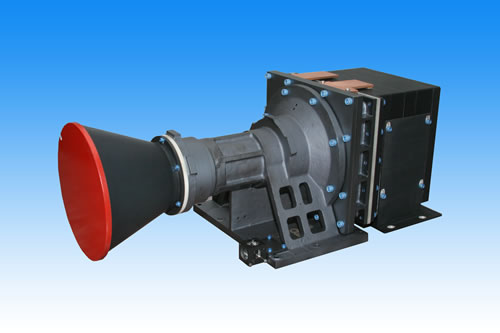Until April 1st, Chang'e II has safely operated for 180 days, achieving its half-year design life. According to reports, the satellite has still plenty of fuel remained, and all concerned parties of the project are researching for giving Chang'e II more missions in order to lay the foundation for completing the follow-up tasks in the second phase of lunar exploration.

After 180 days of safe operation, the current state of satellite systems is normal and stable achieving its half-year design life
Under the news of Technology and Industry , the current state of the second lunar satellite Chang'e II is normal and stable. It has the full realization of the given goals of the project and achieved a number of important scientific results.
Chang'e II satellite was launched on Oct. 1 last year. After several key links: flying to the moon, breaking close to the moon, flying around the moon, drop-rail controlling and up-rail controlling, it has begun to work in the lunar orbit. Since then, the satellite made the high resolution imaging and lunar exploration at 100 × 100 km2 circular orbit and 100 × 15 km2 elliptical orbit respectively.
During the six months, the satellite system, control system and ground application system have carried out the well-organized exploration works and monitored closely the working status of the satellite.
Currently, Chang'e II satellite is in good condition in orbit, has full access to the three-dimensional image data of the lunar surface with 7-meter-resolution, and is carrying out the ongoing four exploration science activities as planned.
The satellite has still plenty of fuel remained, "the final destination" of which may try the expanded detection tests
Previously, after the completion of high-resolution imaging of Rainbow Bay area, the pre-landing zone for Chang'e III, Chang'e II satellite started upward trend back to the 100 km circular orbit around the moon with long-term operation on Oct. 29 last year. From Nov. 2, Beijing Aerospace Control Center implements the long-term management of Chang'e II satellite and carries out a number of long-term scientific lunar exploration tests based on the high-resolution imaging of the whole lunar surface.
During the long-term management in the past six months, the relevant Spacecraft TT & C Stations need to be unified continuously to focus on tracking the satellite selectively and keep a daily track and analysis of the satellite platform and orbit status.
As early as last year, after Chang'e II’s completing the main task of high-precision imaging of Rainbow Bay, due to a lot of fuel left at that time, the researchers estimated the actual life will be longer than the design life, which arouses the public interesting on the final destination of Chang'e II after completing its mission: whether to hit the moon, or fly to deep space beyond the moon, or try to return. This will be determined after six-month life of the satellite.
According to the person in charge of lunar exploration project, after Chang'e II achieved the design life of six months on April 1, the satellite system was in good condition with plenty of fuel remained. The satellite will exceed the original design life of six months. Currently all concerned parties of the project are researching for giving Chang'e II more missions and maximizing its role in order to lay the foundation for the follow-up deep space exploration. It has been revealed that after the completion of the established mission in the life, Chang'e II will carry out the further expanded detection tests in order to lay a solid foundation for completing the follow-up tasks in the second phase of lunar exploration.
Chang'e III will land the moon around 2013, and the prototype product is under development
At present, China's lunar exploration project is mainly unmanned and divided into three stages: "rounding", "landing", and "returning".
"Rounding", that is the first phase of lunar exploration project, is implemented from 2004 to 2007. The task is to launch lunar probe satellite carrying on the exploration around the moon. On Oct. 24, 2007, Chang'e I satellite was launched. After the successful completion of the given tasks and extended service of 127 days, the satellite was successfully managed to hit the Rich Sea area of the lunar surface on March 1, 2009. Chang'e I has obtained 1.37TB scientific exploration data.
"Landing", that is the second phase of lunar exploration project, is implemented from 2008 to 2014. The task is to realize the lunar soft-landing and lunar surface exploration including Chang'e II, Chang’e III and Chang’e IV missions. Among them, Chang'e II assumes to verify some of the key technologies for lunar soft-landing, implements the accurate detection for the subsequent pre-selected landing area, and still takes the model of exploration around the moon. The tasks of Chang'e III are planned to achieve lunar soft-landing and automatic inspection surveys around 2013. Chang’e IV is the backup satellite of Chang'e III.
"Returning" is the third phase of lunar exploration project. The task is to achieve the lunar sample and returns. Recently, the State Council has approved the third phase program of lunar exploration. The development work of the third phase project has been in full swing.
(Source: People's Daily, Yu Jianbin)


